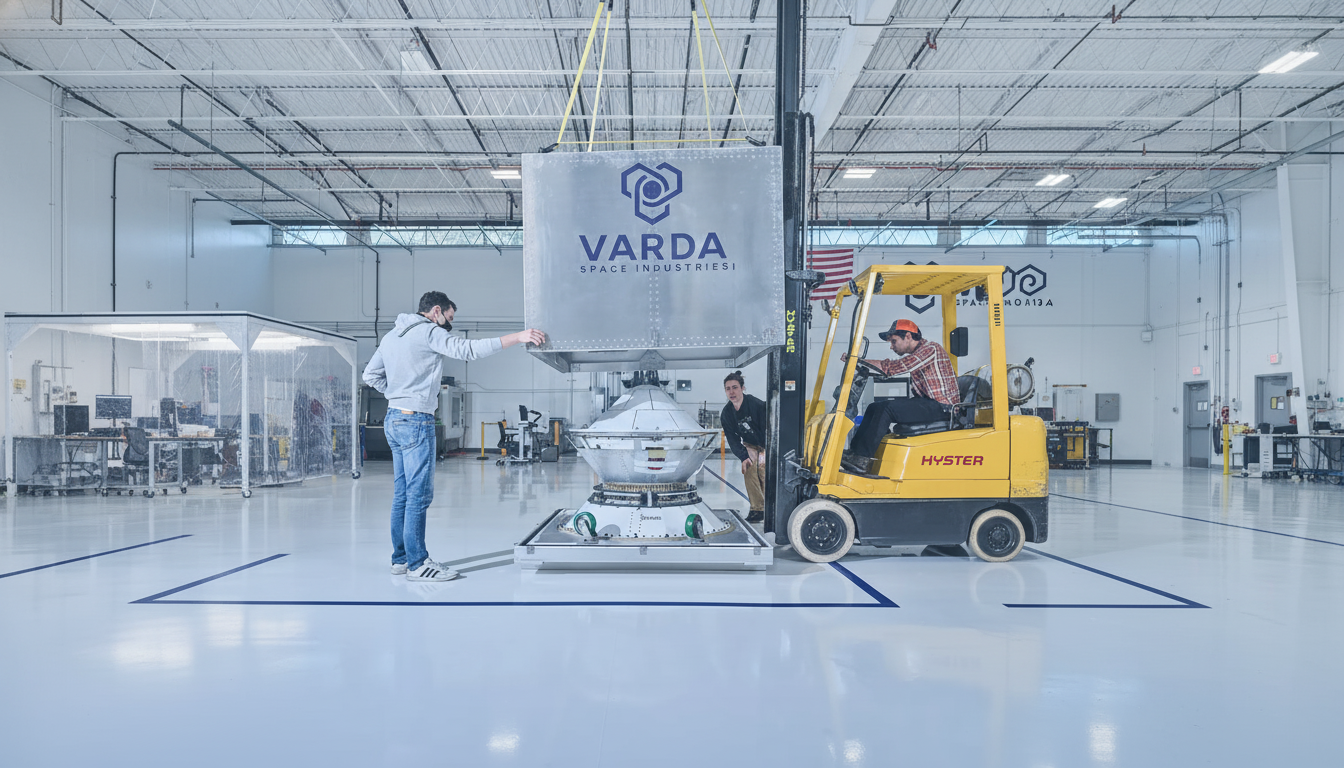On stage at Disrupt 2025, Varda Space Industries cofounder William Bruey sketched out a pragmatic blueprint for something audacious yet increasingly plausible: a commercial supply chain that begins in low Earth orbit and ends at regulated ground facilities. His pitch hinged on a simple but potent idea—treat microgravity as a manufacturing tool, not a novelty—and build the logistics, certification, and cadence to make orbital production routine for high-value goods.
From Spacecraft to Supply Chain: Building Orbital Logistics
Bruey’s plan reframes space hardware as infrastructure in a broader network. Standardized manufacturing capsules fly to orbit for weeks-long runs, then reenter on predictable schedules to land at designated ranges, where payloads are transferred into quality-controlled ground processes and delivered to customers. Think of it as an express lane for materials that gain an advantage when gravity is dialed near zero.
- From Spacecraft to Supply Chain: Building Orbital Logistics
- Why Microgravity Matters for Manufacturing at Scale
- Proving the Return Path from Orbit to Regulated Facilities
- A Factory Model Built for Cadence and Repeatable Throughput
- Partners, Competition, and the Evolving In-Space Ecosystem
- What to Watch Next as Orbital Manufacturing Scales Up

It is an evolution from demonstration missions to a service model: recurring flights, contracted delivery windows, and clear price lists for “microgravity runs.” Bruey’s background—helping guide Dragon spacecraft through multiple ISS missions—shows in the emphasis on cadence and reliability. The aspiration is to make ordering an orbital batch of specialty material feel as familiar as booking a bioreactor slot at a contract manufacturer.
Why Microgravity Matters for Manufacturing at Scale
Microgravity suppresses convection and sedimentation, enabling crystals and fibers to form with fewer defects. Pharmaceutical companies have long tested protein crystallization in orbit; experiments backed by NASA and the ISS National Lab, including studies with Merck, have demonstrated improved crystal uniformity and characterization that can sharpen drug formulation. In photonics, work on ZBLAN-based optical fiber shows that microgravity can reduce imperfections that increase signal loss, a potential edge for specialty telecom or sensing applications.
The economics that once made the idea fanciful are shifting. The Space Foundation reports the global space economy has grown rapidly in recent years, and launch costs continue to trend lower thanks to reusable rockets. With rideshare pricing driving LEO transport toward the low thousands of dollars per kilogram, space-based manufacturing now pencils out for products measured in tens of thousands to millions of dollars per kilogram—categories that include certain active pharmaceutical ingredients, semiconductor precursors, advanced crystals, and high-performance fibers.
Proving the Return Path from Orbit to Regulated Facilities
The linchpin for any orbital factory is safe, licensed reentry and handoff into terrestrial supply chains. Varda has already demonstrated a capsule return and post-flight analysis of a pharmaceutical crystallization payload, working through an extensive regulatory review that involved the FAA and the U.S. Air Force’s Utah Test and Training Range. That experience, Bruey said, informs a playbook for repeatable, insured reentries and for building the ground-side “last mile,” including cleanroom transfer, chain-of-custody, and temperature-controlled logistics.
Regulatory integration remains the heavy lift. Beyond reentry licensing, orbit-to-market workflows must align with GMP standards and, for therapeutics, FDA oversight. Bruey argued that designing the factory and capsule with GMP and validation in mind—rather than retrofitting compliance later—is what will separate experiments from a genuine supply chain.

A Factory Model Built for Cadence and Repeatable Throughput
Varda’s roadmap centers on modularity and throughput: a fleet of small orbital factories that can fly multiple times per year, each optimized for a narrow set of processes like crystallization, fiber drawing, or thin-film deposition. The aim is to hedge technical risk by matching processes to proven orbital conditions and to hedge market risk by keeping batches small, repeatable, and contracted in advance.
On unit economics, Bruey pointed to value density, yield uplift, and cycle time. If microgravity can boost yield or purity even modestly on very high-value materials, the margin can justify launch and reentry. McKinsey and Deloitte analyses of biopharma and specialty materials highlight how a few percentage points of yield improvement can swing margins dramatically—an argument Bruey echoed for orbital runs where defects are especially costly.
Partners, Competition, and the Evolving In-Space Ecosystem
Varda is not alone in chasing in-space manufacturing. UK-based Space Forge is developing reusable return vehicles; Redwire has advanced microgravity production and bioprinting on the ISS; and private stations from firms like Axiom Space and partnerships such as Orbital Reef and commercial LEO destinations under NASA’s transition plan could expand available real estate. Bruey positioned Varda as the “express node” optimized for autonomous production and fast return, with launch and bus partners providing the ride and Varda owning the process, capsule, and ground chain.
Customers, he suggested, span pharmaceutical innovators seeking better crystallization, optical fiber makers exploring lower-loss draws, and defense and aerospace programs needing ultra-pure materials. The near-term go-to-market looks like joint development agreements and paid pilots that convert into capacity reservations, a familiar path in advanced manufacturing.
What to Watch Next as Orbital Manufacturing Scales Up
The milestones that matter are straightforward: additional licensed reentries, GMP-qualified ground facilities integrated with customs and safety protocols, and third-party validation of material advantages from orbital runs. Independent assessments—whether by university labs, the ISS National Lab, or corporate R&D teams—will be crucial to move from promising demos to purchase orders.
If Varda can stack those wins and hit a steady cadence, Bruey’s factory-in-orbit could become less a spectacle and more a spreadsheet line item. That is the quiet revolution he is selling: a supply chain that starts above the atmosphere, lands on schedule, and feeds industries where even a small performance edge moves markets.

